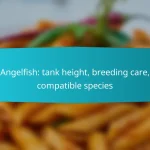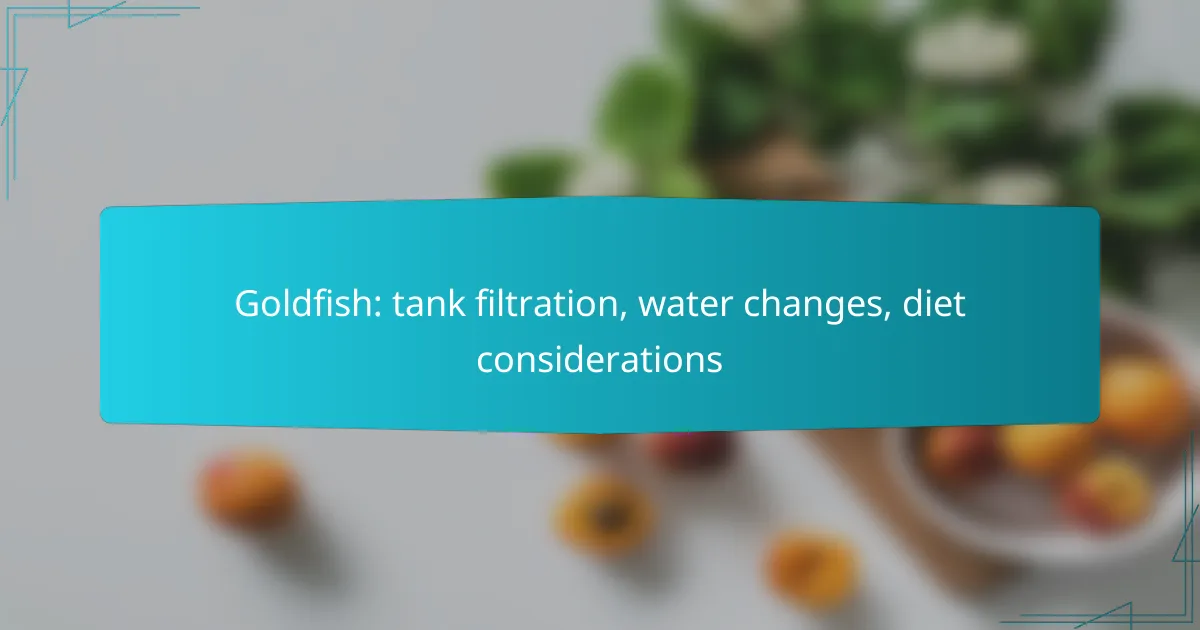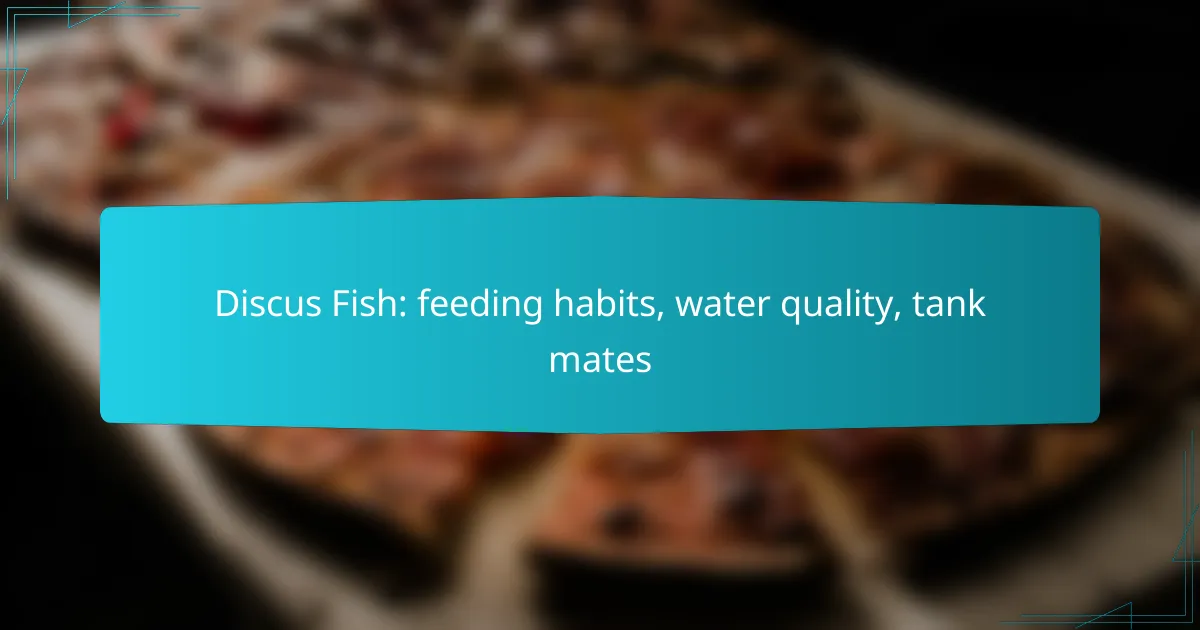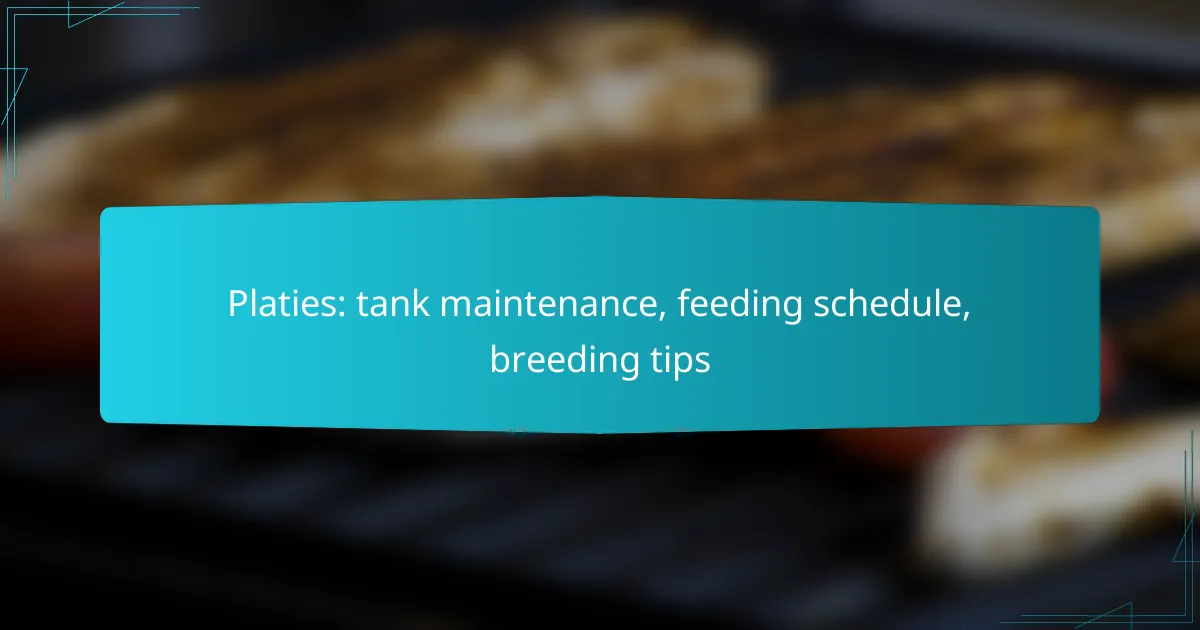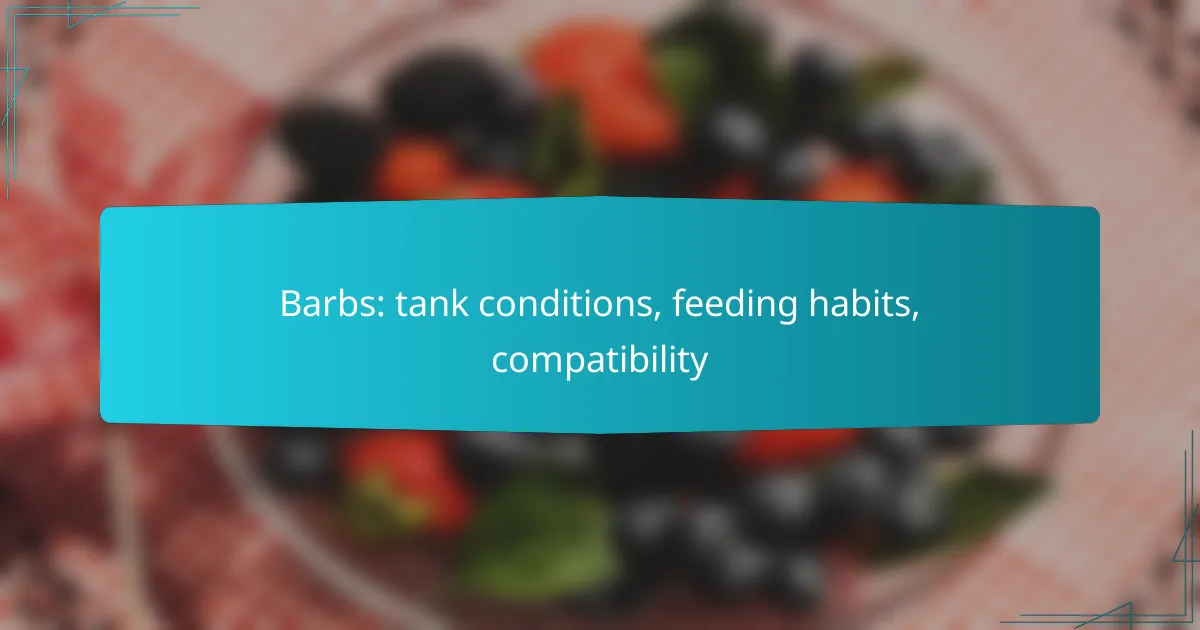Maintaining a healthy goldfish tank requires careful attention to filtration, water changes, and diet. Selecting the appropriate filtration system is vital for water quality, while regular water changes help eliminate waste and toxins. Additionally, providing a balanced diet of high-quality pellets, flakes, and fresh vegetables supports the overall health and vitality of your goldfish.

How to choose the right filtration system for goldfish tanks?
Selecting the right filtration system for goldfish tanks is crucial for maintaining water quality and ensuring the health of your fish. Consider factors such as tank size, goldfish bioload, and filter type to find the best fit for your setup.
Canister filters for goldfish
Canister filters are powerful and versatile, making them ideal for larger goldfish tanks. They can handle high bioloads and provide excellent mechanical, chemical, and biological filtration.
When choosing a canister filter, look for models with adjustable flow rates and multiple media compartments. This allows you to customize filtration to suit your tank’s specific needs.
Hang-on-back filters for goldfish
Hang-on-back (HOB) filters are popular for their ease of installation and maintenance. They are suitable for smaller tanks and can effectively filter water while providing aeration.
However, be cautious with HOB filters as they may struggle with the waste produced by goldfish. Opt for a model rated for a tank size larger than yours to ensure adequate filtration.
Internal filters for goldfish
Internal filters are compact and can be placed inside the tank, making them a good choice for smaller setups. They are generally less expensive and easy to maintain.
While internal filters are effective for basic filtration, they may not be sufficient for larger tanks or heavy bioloads. Consider using them in conjunction with another filter type for optimal results.
Recommended brands: Fluval, AquaClear
Fluval and AquaClear are two reputable brands known for their reliable filtration systems. Fluval offers a range of canister filters that are efficient and quiet, while AquaClear provides versatile HOB filters with customizable media options.
When selecting a filter, check user reviews and warranty information to ensure you are making a well-informed choice. Both brands have models suitable for various tank sizes and goldfish needs.
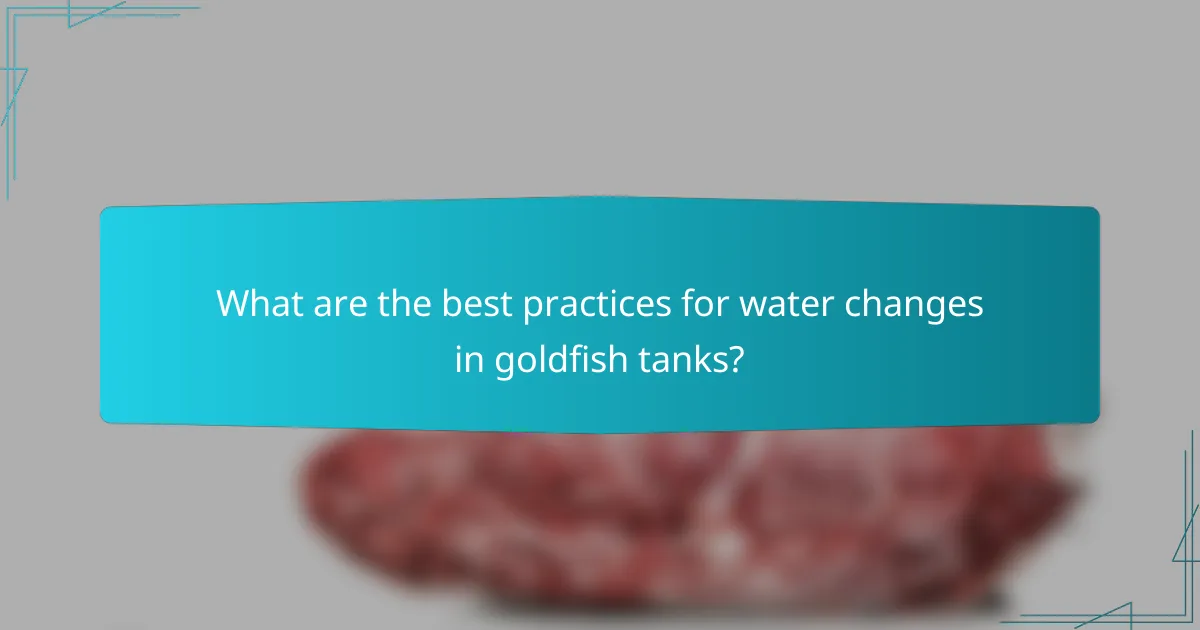
What are the best practices for water changes in goldfish tanks?
Regular water changes are essential for maintaining a healthy environment in goldfish tanks. They help remove waste, toxins, and excess nutrients, ensuring optimal water quality for your fish.
Frequency of water changes
For goldfish tanks, it’s recommended to perform partial water changes at least once a week. In heavily stocked tanks or during warmer months, you may need to increase this frequency to twice a week. Monitoring water parameters can help determine if more frequent changes are necessary.
Volume of water to change
Changing about 20-30% of the tank’s water during each water change is generally effective. This volume helps maintain water quality without stressing the fish. In cases of high waste accumulation, consider increasing the volume to 50% but do so gradually to avoid shocking the fish.
Water conditioning products
Using water conditioning products is crucial when adding tap water to your goldfish tank. Dechlorinators neutralize harmful chemicals like chlorine and chloramine, making the water safe for your fish. Always follow the manufacturer’s instructions for dosage to ensure proper treatment.

What should you feed goldfish for optimal health?
To ensure optimal health, goldfish should be fed a balanced diet that includes high-quality pellets, flakes, and occasional fresh vegetables. A varied diet supports their growth, enhances coloration, and boosts their immune system.
Types of goldfish food
Goldfish food comes in several forms, including flakes, pellets, and gel food. Flakes are easy to digest and suitable for smaller goldfish, while pellets provide a more balanced nutrition and are ideal for larger varieties. Fresh vegetables like peas and spinach can be offered as occasional treats to enhance their diet.
When selecting food, look for options that contain high protein levels and essential vitamins. Avoid foods with excessive fillers or artificial colors, as they can lead to health issues.
Feeding frequency
Goldfish should be fed 1-2 times a day, with only as much food as they can consume in a few minutes. Overfeeding can lead to water quality issues and health problems, so it’s crucial to monitor their intake. If you notice leftover food after feeding, reduce the portion size.
During warmer months, goldfish may have a higher metabolism and require more frequent feedings. Adjust the feeding schedule accordingly, but always prioritize quality over quantity.
Recommended brands: Hikari, Tetra
Hikari and Tetra are two reputable brands known for their high-quality goldfish food. Hikari offers a range of pellets and flakes that cater to different goldfish sizes and needs, while Tetra provides a variety of nutritious options that promote vibrant colors and healthy growth.
When choosing a brand, consider the specific dietary needs of your goldfish and select products that are free from artificial additives. Reading reviews and checking ingredient lists can help ensure you make the best choice for your aquatic pets.

How to maintain water quality in goldfish tanks?
Maintaining water quality in goldfish tanks is crucial for their health and longevity. Regular testing, appropriate filtration, and consistent water changes are key practices to ensure a stable environment for your goldfish.
Testing water parameters
Regularly testing water parameters helps you monitor the health of your goldfish tank. Key factors to check include pH, ammonia, nitrite, and nitrate levels. Ideal pH for goldfish is typically between 7.0 and 8.4, while ammonia and nitrite should be at 0 ppm.
Use a reliable test kit or strips to measure these parameters weekly, especially in newly established tanks. Keeping a log of your readings can help you identify trends and potential issues early.
Common water quality issues
Common water quality issues in goldfish tanks include high ammonia levels, which can lead to stress and illness. This often results from overfeeding or inadequate filtration. Regular water changes of 10-20% weekly can help mitigate this problem.
Another issue is high nitrate levels, which can accumulate over time. If nitrates exceed 40 ppm, consider increasing your water change frequency or adding live plants to help absorb excess nutrients. Always ensure your tank is properly cycled to maintain a healthy balance.
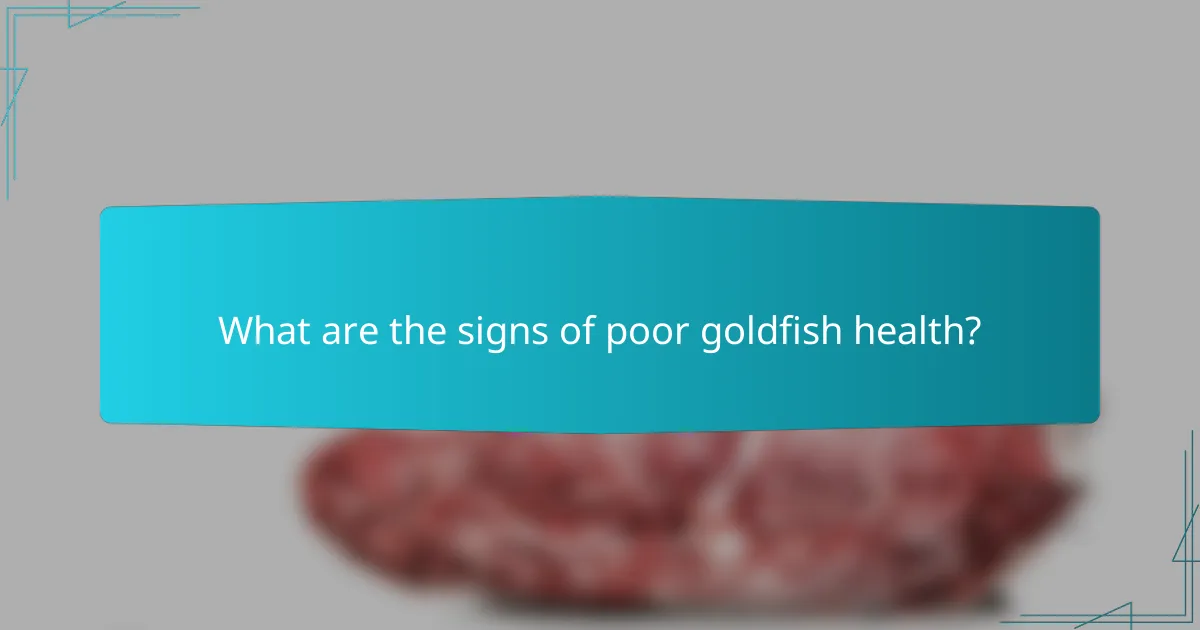
What are the signs of poor goldfish health?
Signs of poor goldfish health can include changes in behavior, physical symptoms, or both. Observing these indicators early can help prevent serious health issues and ensure a thriving aquatic environment.
Behavioral indicators
Behavioral changes are often the first signs of health issues in goldfish. If your goldfish is lethargic, hiding more than usual, or displaying erratic swimming patterns, these may indicate stress or illness. Additionally, if they are not eating or are excessively rubbing against tank surfaces, it is essential to investigate further.
Another key behavioral sign is the presence of rapid gill movement or gasping at the surface. These actions can suggest poor water quality or oxygen levels, which require immediate attention to prevent further health deterioration.
Physical symptoms
Physical symptoms of poor goldfish health can manifest in various ways. Look for changes in coloration, such as fading or darkening, which may indicate stress or disease. Swelling, lesions, or unusual growths on the body can also signal underlying health issues that need to be addressed.
Additionally, observe the fins and tail for signs of fraying or clamping. Healthy goldfish should have vibrant, flowing fins. If you notice any abnormalities, it may be time to check water quality, diet, or consult a veterinarian for further evaluation.





